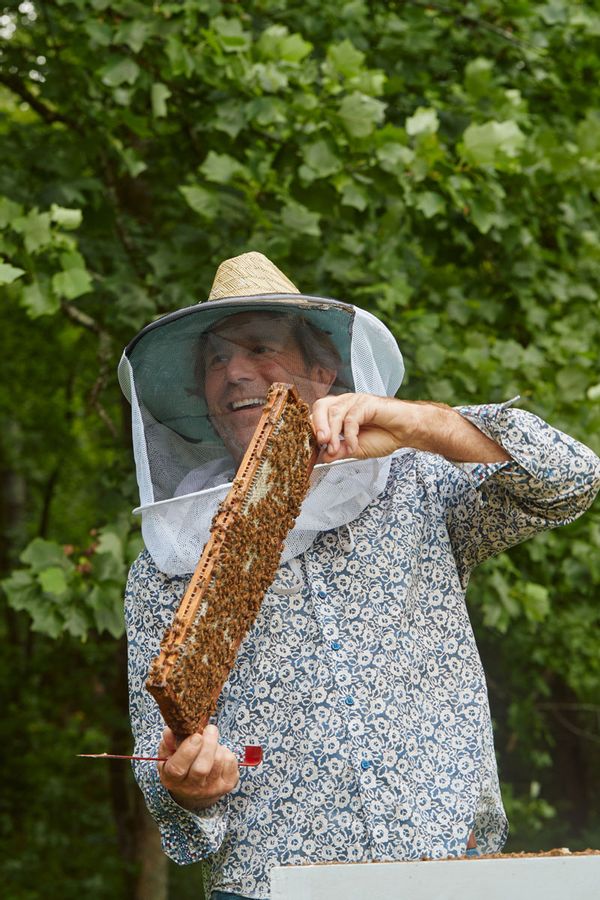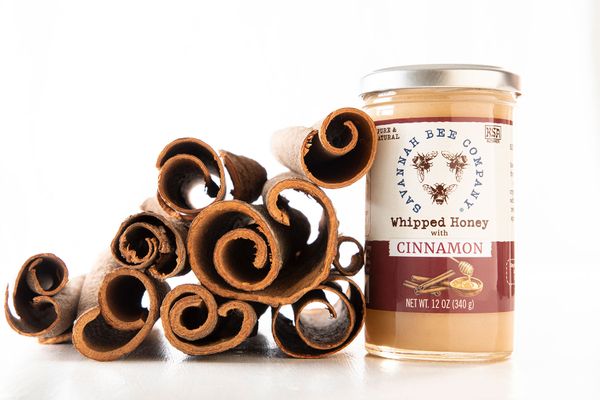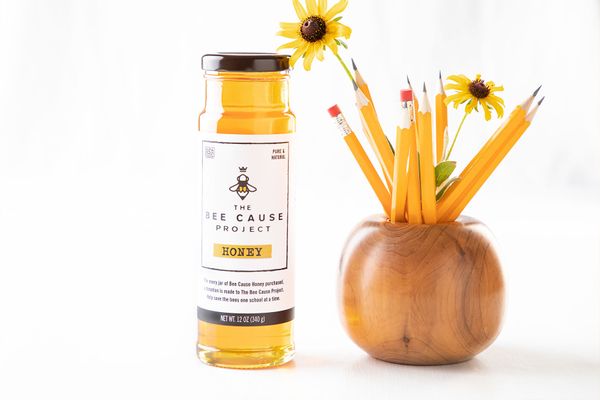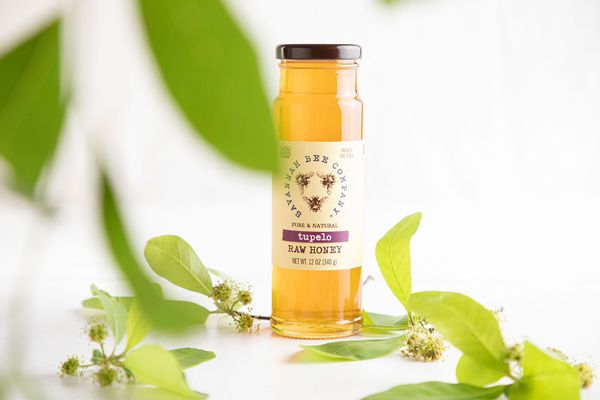From bee to bottle, Savannah Bee Company founder answers your buzziest questions about honey
Call me Winnie the Pooh, I guess, because I’m a honey adherent through and through.
Viscous as all get out, sweet as heck, and an amazing inclusion in anything from cheese boards and savory dishes to sweetened beverages and rich desserts, honey is (clearly) a top-tier ingredient.
Even though it can certainly add a saccharine note when used in excess, it is legitimately near perfect when used sparingly.
At the same time, however, I’ve had some burning questions about honey that I could never seem to get a handle on. So, who better to answer my questions than bee expert and founder of Savannah Bee Company Ted Dennard, who established the company back in 2002.
As their website states, though, “You’ll notice our name doesn’t contain the word ‘honey’ — our mission has always been about the bees.”
While the company certainly sells honey in a truly incredible array of flavors and variations (their orange blossom honey is genuinely one of the best honeys I’ve ever tasted) their true ethos is bee-centric. Furthermore, they have a nonprofit organization called The Bee Cause Project, about which I also spoke with Dennard.
The following interview has been lightly edited for clarity and length.
I know that Tupelo Honey is elusive; how short is the “spring bloom” season?
The bloom is about 2 weeks long, once a year, but the weather has to align with just the right amount of temperature and humidity and wind for the bees to actually make any honey. Just like this year’s crop where it was the last 3 days of the bloom where the bees made 90% of the honey, the actual honey making time is very, very short.
Tupelo honey is my love and the one that launched Savannah Bee Company. The flavor is distinctly buttery and softly sweet. When it is the pure stuff, it will have a greenish cast to it and a bubble gum taste. Because it has a different sugar composition than most all other honeys the softer, less candy sweet is more on the middle back of your tongue before it just vanishes leaving your mouth with that delicious bubble gum dust flavor.
What is unique about the regions in which Tupelo honey is produced?
Well for starters, the trees only grow in rivers and swamps in an endangered ecosystem called a Tupelo Cypress Swamp. The only honey produced comes on rivers between Savannah, Georgia and Apalachicola, Florida. There are still some beekeepers today that will use a barge to get their hives into the deep tupelo stands in remote river regions. They are called black water rivers because the tannins from all the leaves turn the water into a dark iced tea color that looks very dark when deep. Alligators and turtles thrive there.
 Ted Dennard (Photo courtesy of Savannah Bee Company
Ted Dennard (Photo courtesy of Savannah Bee Company
How exactly is honey made? From the bee to the bottle, what is the process?
Most adults don’t know that honey is made from the nectar the bees collect from the flower, not the pollen. They have a little carrying tank before their stomach that is full of enzymes and probiotic bacteria that begins the process of making honey. Once they put it in the honeycomb cells, they fan the water out of it. Usually, the nectar is about 80% water and they fan it down to about 17% water before capping it. Then, when the frames inside the top boxes are capped off and full, they are taken to the ‘honey house’ and extracted. You must first cut the beeswax capping off and then place the frames in a metal basket that spins inside of a stainless-steel drum. The honey is slung out and then stored in a tank before putting into drums for storage before bottling. Honey doesn’t need to be heated or treated. It never spoils. We lightly filter it to get out the little pieces of wax and any other little specs.
Please answer this for us for once and for all: Should honey be refrigerated or not?
The answer is definitely NO. Most honey will granulate at 57 degrees or any temperature near that (remember honey types vary in sugar composition and some are more prone to it than others). Honey never spoils, so all you do is keep a lid on it on your shelf or counter. And if honey does granulate it is still perfectly fine to eat. You can melt it back out in a double boiler if you feel the need.
What is a monofloral honey?
Bees practice floral specification otherwise known as flower fidelity. The bees will pick “the best” flower in their area and tell the rest of the hive. All of the bees will then use it as their primary nectar source. This gives each honey a distinct flavor, color and sugar composition. If the beekeeper can get the bees into an area filled with the species of plant, she wants to make the honey from then with some skill and some luck the bees will make a monofloral (single flower) honey. They will need to remove the boxes of honey made during that bloom to avoid mixing of other types of honey. When the nectar from the ‘best source’ dries up they will move on to the next species that is producing nectar. The term wildflower honey refers to the multiple flower species involved in producing the bottle. Most honey is just mixed from everything the bees made over the previous months.
Did you get into beekeeping when growing up?
Yes. When I was young, a man named Roy Hightower put his bees on our family land. I took an interest and began helping him clean hives and harvest honey. He was the spark for my lifelong love of bees and honey.
 Jar of Whipped Honey with Cinnamon (Photo courtesy of Savannah Bee Company
Jar of Whipped Honey with Cinnamon (Photo courtesy of Savannah Bee Company
What else does Savannah Bee sell aside from strictly honeys?
In addition to pure honey, we sell a hot honey infused with peppers, a creamed honey infused with cinnamon or spices, honey body care products like body butters, lotions and hand creams, mead (honey wine) honey hot sauce, honey BBQ sauces and other bee related products.
The “about” states that Savannah Bee “makes decisions about sourcing honey based on purity rather than on profit” — could you talk a bit about that?
Well, we could cut corners on getting honey that is marginal and cheaper. Like a honey that has a lot of other stuff besides tupelo in it and cutting our pure tupelo with it. But we do our best to make sure we don’t do that even if that means we are going to run out and not be able to make the sales. There is a saying that five times as much tupelo honey is sold than is made. And my guess is that most people just don’t know the difference but I certainly do. The same goes for any honey that we sell. We are more like honey snobs. Another example is our recent switch to a much more expensive honey to make our honey hot sauce and our hot honey. It just tastes better which is more important than reducing our cost of goods.
I’d love to learn about The Bee Cause Project. Can you tell me about it?
The Bee Cause Project began in 2013. Tami Enright, the Bee Cause Project’s current Director and I were offhandedly talking about how cool it would be to put beehives in 1000 schools. We never thought anyone would actually be on board for this and at first, they weren’t. Our goal is and has always been to raise a generation that understands, loves and protects the honey bee. The Bee Cause project puts observational hives in schools and gives grants for educational materials to teach kids about pollinators. We are looking forward to hitting 1000 schools with grants/hives in the coming years.
 Jar of The Bee Cause Project Honey (Photo courtesy of Savannah Bee Company
Jar of The Bee Cause Project Honey (Photo courtesy of Savannah Bee Company
What are your favorite ways to use Tupelo honey?
Strong black Yunnan tea with some milk. Every morning. In fact, I just finished a cup while answering these questions.
Generally, do you prefer honey drizzled onto cooked food or honey actually incorporated into cooked, composed dishes?
I do both, depending on what it is. Drizzled will maintain more of the enzymes in raw honey as cooking can kill the enzymes. But sometimes you just need to cook it. Yesterday, a friend told me how he added the hot honey to his chili instead of sugar and that his girlfriend thought it was so much better. So, I wouldn’t be exclusive on trying to maintain the enzymes. You can always eat a spoon of honey.
What exactly is raw honey?
Raw honey is honey that has not been heated to a temperature that would kill the living enzymes and also hasn’t had the pollens filtered out. Raw honey in its purest form would be the honeycomb which is edible and filled with natural vitamin A and also is a source of roughage. Beekeepers are supposed to live longer than any other profession and that longevity is attributed to the raw honey and pollens they eat.
 Jar of Tupelo Raw Honey (Photo courtesy of Savannah Bee Company)
Jar of Tupelo Raw Honey (Photo courtesy of Savannah Bee Company)

